From dark satire to travel inspiration and fashion influence, HBO’s The White Lotus transcended television to become a cultural touchstone. Here’s how smart storytelling, strategic marketing, and organic fandom converged to create a pop culture powerhouse.
A Show That Quietly Took Over Culture
In today’s saturated content landscape, few shows have managed to transcend the screen and embed themselves in the cultural consciousness quite like HBO’s The White Lotus. What began as a clever satire of privilege and power quickly evolved into a global conversation starter—fueling memes, inspiring vacations, shaping fashion trends, and even influencing lifestyle aspirations.
But was its rise purely organic, or did HBO engineer this ascent through masterful marketing? The answer lies in a powerful blend of nuanced storytelling, smart positioning, and a marketing approach that let the audience take the lead.
From Niche Drama to Digital Obsession
Unlike blockbuster hits such as Game of Thrones, The White Lotus didn’t arrive with massive fanfare. Instead, it grew steadily—thanks in large part to Mike White’s layered storytelling and a cast of flawed, fascinating characters. Each season mixed social commentary with satire and suspense, always culminating in a murder mystery that kept viewers guessing.
This narrative approach made the series perfect for social media. Platforms like TikTok, Instagram, and X (formerly Twitter) buzzed with memes, hot takes, fan theories, and aesthetic appreciation. YouTube was flooded with deep-dive analyses into its themes—ranging from class tension to gender politics—fueling conversation long after episodes aired.
The show’s slow-burn success turned it into a cult favorite, driven by psychological intrigue and razor-sharp commentary instead of spectacle. Fans weren’t just watching—they were unpacking, sharing, and obsessing.

Four Seasons Resort Maui at Wailea. Picture: SFGATE
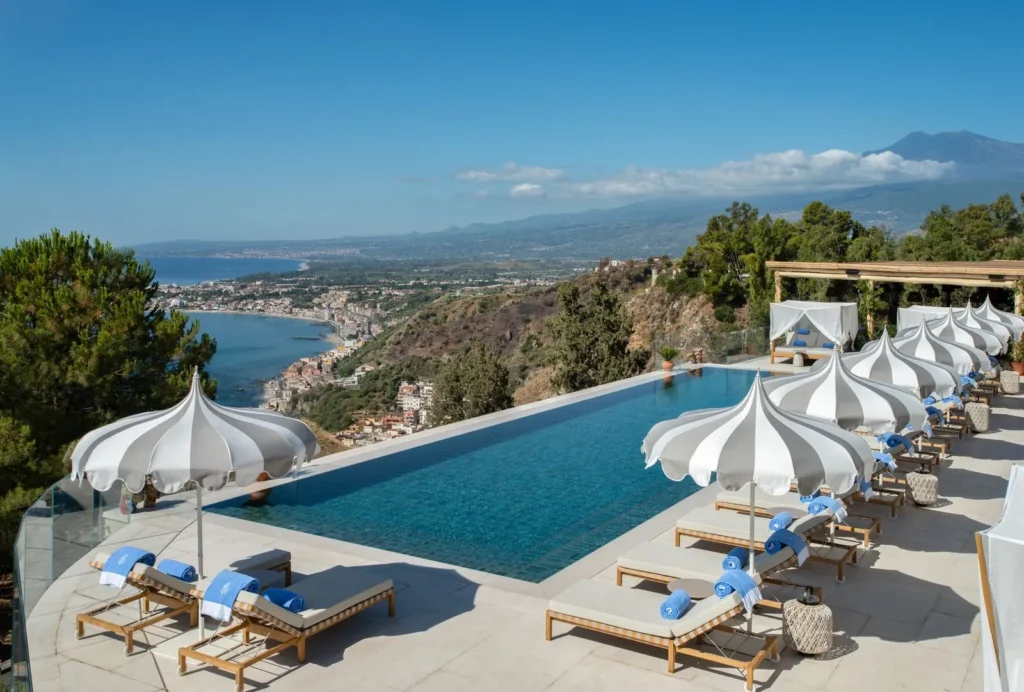
San Domenico Palace, Taormina, Picture : Architectural Digest
Set-Jetting: Turning Locations into Aspirations
Perhaps The White Lotus’s most tangible impact has been on travel. Season 1, filmed at the Four Seasons Resort Maui, spurred a notable increase in interest for Hawaiian luxury getaways. Season 2, set at the San Domenico Palace in Sicily, went even further—its sun-drenched backdrops and coastal charm inspired a tourism boom.
Travel publications capitalized on the buzz, offering guides to live your own White Lotus vacation. The term set-jetting—traveling to filming locations—saw renewed relevance, especially in the luxury sector.
Though there’s no confirmation of formal partnerships with tourism boards, the show’s meticulous location choices suggest strategic intent. HBO didn’t just find beautiful backdrops—it selected destinations primed to become aspirational icons, turning every episode into a high-end travel brochure.
Fashion Influence: The Rise of ‘Coastal Chic’ and Quiet Luxury
The show’s impact went beyond wanderlust—it extended to wardrobes. Costume design on The White Lotus didn’t just support character development; it became a fashion statement.
Season 1 introduced vibrant resortwear. Season 2 elevated quiet luxury—an understated yet high-end aesthetic exemplified by characters like Daphne and Harper. Meanwhile, Tanya’s eccentric ensembles became instantly meme-worthy, and Portia’s chaotic Gen Z fashion choices sparked fierce online debate.

Jennifer Coolidge as Tanya McQuoid
Influencers recreated outfits, fashion magazines dissected character styles, and brands began aligning with the show’s aesthetic. The wardrobe wasn’t just dressing characters—it was setting trends. Whether through direct partnerships or ambient cultural influence, The White Lotus became a fashion mood board for the aspirational and the ironic alike.
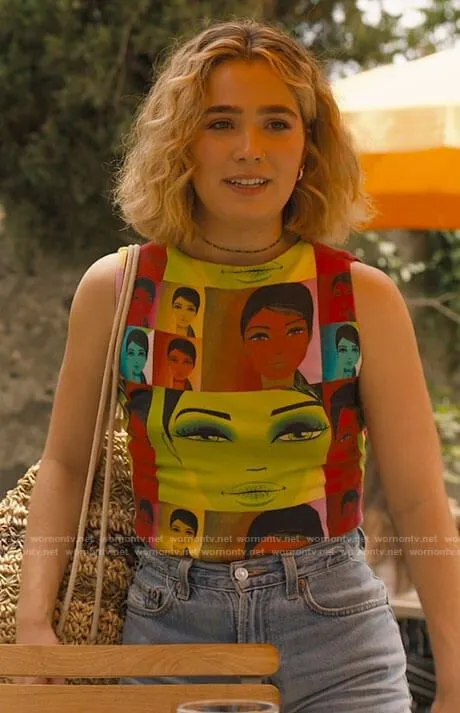
Haley Lu Richardson as Portia in White Lotus
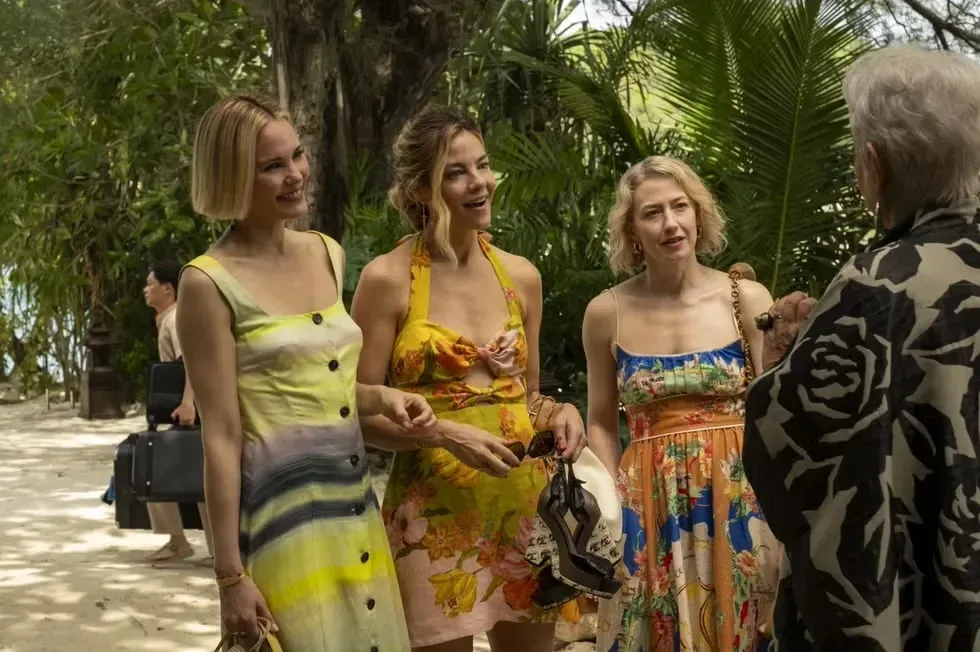
A snippet from Season 3 shows the vibrancy of the wardrobe
Behind the Scenes: HBO’s Subtle Marketing Genius
While viewer enthusiasm fueled much of the show’s cultural traction, HBO’s marketing machine deserves credit for laying the foundation.
The network timed releases perfectly, crafted elegant yet intriguing trailers, and deployed stunning visual key art. Casting a blend of seasoned actors and rising stars helped draw in diverse audiences. Cast appearances on talk shows, podcasts, and media platforms amplified awareness without feeling overproduced.
HBO also avoided heavy-handed advertising, instead focusing on building intrigue and emotional resonance. It was a lesson in restraint—letting storytelling and community conversation lead, while ensuring just enough visibility to keep the buzz alive.
Social media content, influencer seeding, and curated digital assets quietly nudged engagement without hijacking it. The brilliance lay in letting The White Lotus feel like a discovery, not a campaign.
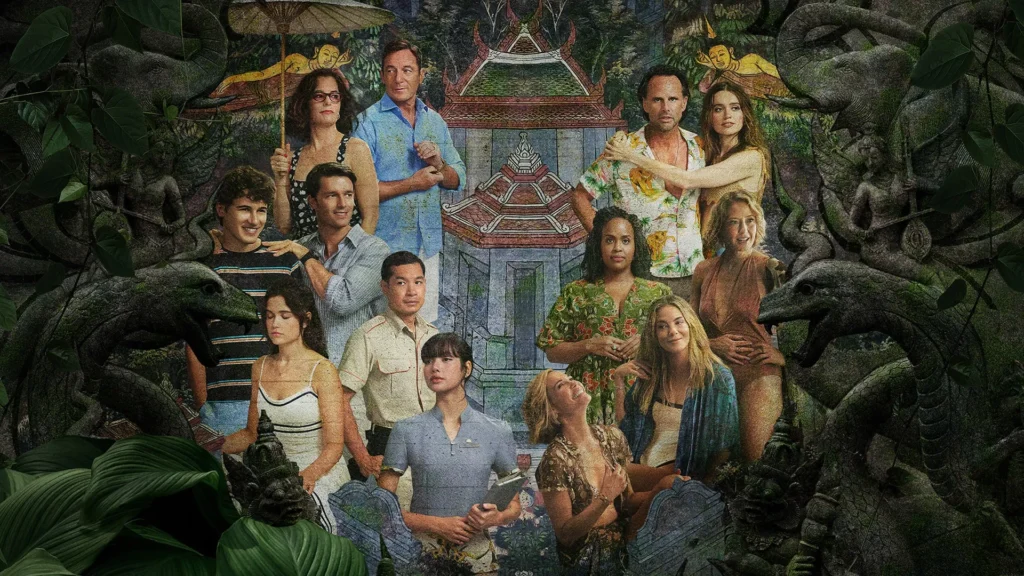
The White Lotus Key Art. Picture : HBO
Brand Collaborations: Subtle Yet Strategic
The White Lotus universe—visually rich, culturally savvy, and stylishly aspirational—proved fertile ground for brand collaborations. The trick? Subtlety.
While overt product placement would have clashed with the show’s satirical tone, brands still found ways to align. Fashion giants like Louis Vuitton, Gucci, and Jacquemus capitalized on the show’s aesthetic appeal, with Louis Vuitton generating over $4.3 million in Media Impact Value (MIV), according to Launchmetrics.
Retailers like Bloomingdale’s and Banana Republic launched themed collections. Even unexpected entrants like Coffee Mate got in on the vibe. Each tapped into the cultural cachet of The White Lotus without disrupting its storytelling integrity.
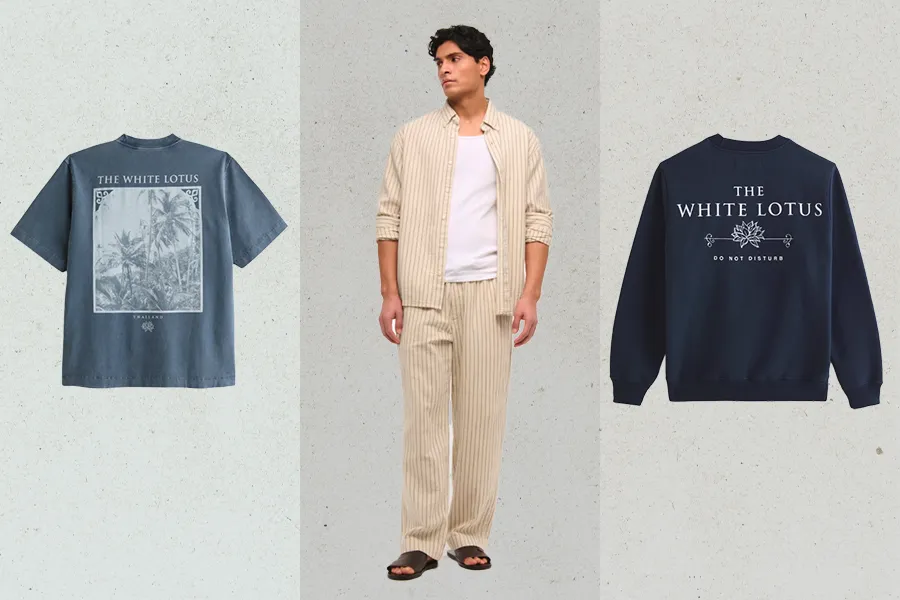
The White Lotus inspired, Abercrombie & Fitch merchandise
Marketing Lessons from The White Lotus
The success of The White Lotus offers valuable insights for modern marketers:
- Tap into emerging subcultures: Pay attention to niche communities and online conversations that hint at growing trends or moods.
- Focus on aesthetic and emotion over product: Align campaigns with vibes and values your audience already embraces.
- Let the audience co-create: Encourage memes, UGC, and discourse instead of dictating brand narratives.
- Stay subtle but strategic: Allow your brand to blend into culture rather than dominate it, especially when aiming for aspirational positioning.
- Timing and tone are everything: Cultural relevance often hinges not on scale, but on sharp timing and authentic tone.
A New Kind of Cultural Juggernaut
The White Lotus represents a shift in how cultural dominance looks. Where Game of Thrones won with scale and spectacle, The White Lotus triumphed through elegance, irony, and emotional depth. It’s proof that meaningful engagement doesn’t need dragons—sometimes all it takes is a tense dinner conversation at a luxury resort.

The show’s rise is a testament to how compelling narratives, community-driven buzz, and savvy branding can turn a quiet satire into a global mood. For marketers, it’s a masterclass in how to let the story—and the audience—do the talking.













